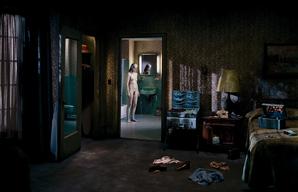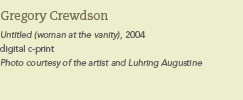

 |
|||
![]()
I write this from a hotel room in Massachusetts, sitting and thinking about the past three days I have spent driving around looking for a location that feels like it is nondescript but is very particular. In other words, I have been searching for a sense of the American landscape that is linked intrinsically to Edward Hopper’s vision. Hopper has been profoundly influential to me as an artist. Emerging from a distinctly American tradition, Hopper’s work deals with ideas of beauty, sadness, alienation, and desire. I think it is now virtually impossible to read America visually without referring back to the archive of visual images created by artists who found inspiration in Hopper’s paintings. His art has shaped the essential themes and interests in the work of so many contemporary painters, writers, and, above all, photographers and filmmakers. His narratives occur in moments that are forever suspended between “before” and “after”–elliptical, impregnated moments that never really resolve themselves. There is a deep reservoir of psychological anxieties in his work, a sense of stories repressed beneath the calm surface. For me, his use of light makes his paintings feel more psychologically based. In these very ordinary situations, the light reveals the story and serves as a narrative code. It provides some possibility of transformation, giving the paintings a particular theatricality. Hopper depicts a world that is at the same time beautiful and sad, familiar and strange, inviting yet ultimately inaccessible. I think these polarities are at the center of his work and may indicate why so many artists, including myself, are drawn to it, again and again. |